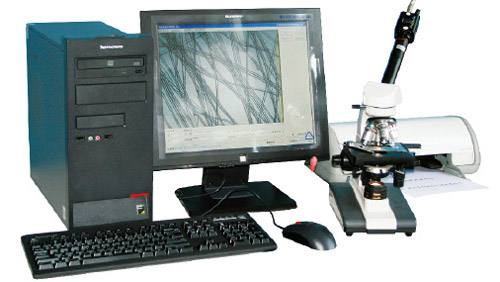
Fiber fineness and length are the most important quality indexes of cashmere and wool. Almost all the properties of cashmere and wool and the style and performance of textile products are related to the fineness and length of the fiber. Therefore, in the trade, the price of cashmere and wool basically depends on the fineness and length of the fiber.
In 1992, the Swiss Peyer company demonstrated the OFDA instrument jointly developed by them and the University of New South Wales in the Third International Textile Machinery Exhibition in Beijing. Almeter was also developed by the company before OFDA.
Ofda4000 came out in 2002. It is a kind of three in one instrument, that is, it can complete the work of the prototype, Almeter length meter, ofda1000 or ofda2000 in one instrument at the same time.
In 2002, the IWTO set up a special working group for ofda4000 instruments to develop test method standards.
From 2002 to 2010, the working group submitted 13 papers to the WTO. Two cycle tests were conducted. The first cycle test was conducted in 2004 / 2005 and 40 samples were used. In 2010, the second cycle test was organized, 30 samples were used, and 5 laboratories from strip mills participated in the test, including 2 laboratories in China. In 2005, it was adopted as iwtodtm-62 "method for determining fiber length and length distribution, fiber diameter and diameter distribution of finished wool slivers and other slivers - ofda4000 method" in Biella conference in Italy. In 2010, it was upgraded to the official standard of IWTO at the Paris conference.
OFDA series of instruments can get some indicators that need to be paid attention to in process design and quality control when producing high-end products. For example:
1) Spinning fineness (SP): the spinning fineness is calculated according to the average diameter and coefficient of variation. Every 5% decrease in coefficient of variation is equivalent to 1 μ m decrease in actual spinning fineness. For example, if the wool fineness is 20 μ m and the coefficient of variation is 24%, the spinning fineness is 20 μ m; if the wool fineness is 20 μ m and the coefficient of variation is 19%, the spinning fineness is 19 μ M.
2) Fpft: the distance between the thinnest point in the tuft and the tip. If the fpft value is 30mm, it means that the distance between the thinnest position and the hair tip is 30mm. If the fpft value is 0, the hair tip is the thinnest position. There is a high correlation between the fpft value and the breaking position of the tuft obtained by testing the tuft strength before selling the wool.
3) Fiber ends: the lower the end fineness index of wool fiber used, the more comfortable the fabric is. The fineness index of fiber end can be expressed as positive or negative value. If the average fineness of a sample is 20 μ m and the fineness index of fiber end is + 1.5, it means that the average fineness of fiber end is 1.5 μ m larger than the average diameter of the sample.
More information, please visit:
https://www.qinsun-lab.com/index.html
